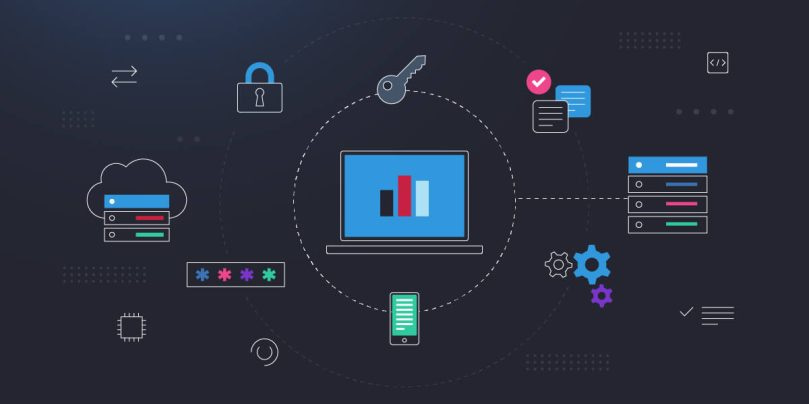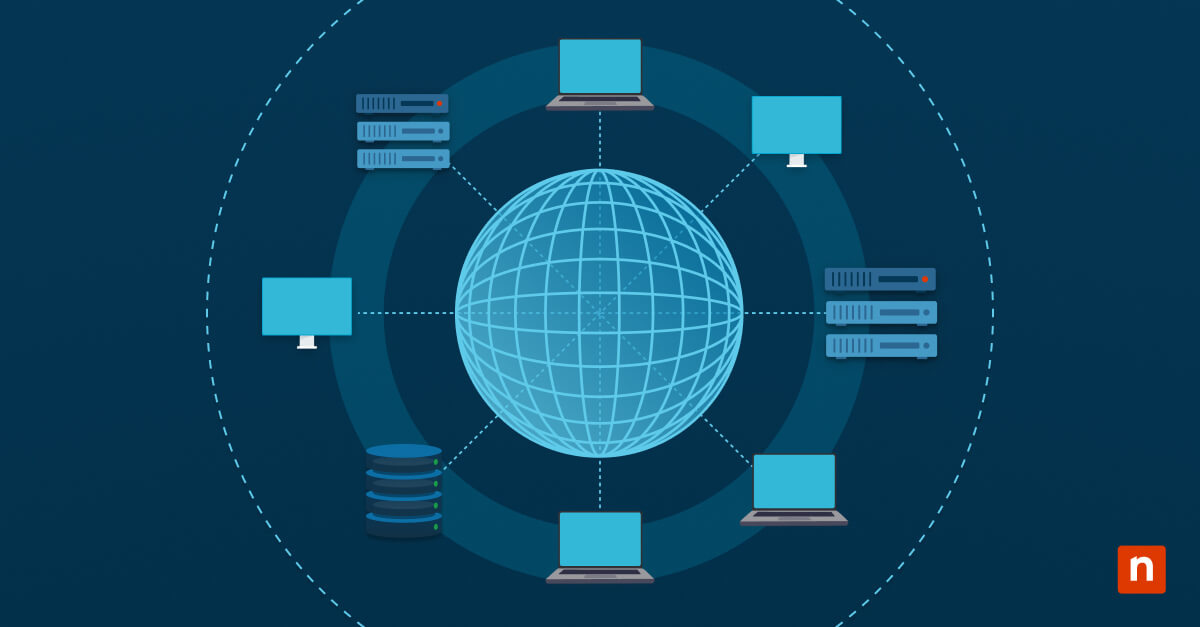Technology has become increasingly prevalent in business operations, to the point that it’s practically mandatory. IT assets can range from individual computers to entire networks. Since there are typically countless different IT assets, the process of IT Asset Management has become increasingly essential, as has ITAM best practices.
What is IT Asset Management?
IT Asset Management (ITAM) consists of the steps and processes a business uses to manage all of the IT assets in the organization. IT assets include all hardware and software within your organization’s IT environment. ITAM has many subsets, such as CMDB, that play an important role in managing IT assets. The supervision of these assets is typically carried out through an IT asset management tool.
What are the Benefits of IT Asset Management?
There are many benefits from ITAM that all contribute to the overall success of your business. Here are a just few key ITAM benefits:
More Organization
One of the first issues that ITAM solves is a lack of organization. ITAM enables you to create an inventory of all your IT assets and oversee them. It can be a challenge to keep track of all IT assets, but an ITAM process simplifies this by giving you a designated location to organize these assets.
Increased Security
Another significant benefit of ITAM is that you are given more control over the security of your IT environment. IT assets inherently come with security risks, so it is wise to minimize them wherever possible. ITAM gives you more visibility over your IT assets, so you can track their health, status and ensure they are as secure as possible.
Cost Savings
The IT assets within any organization are costly, and not tracking these assets can result in many lost dollars. Expenses for hardware, software licenses, and maintenance costs can add up quickly if you’re not keeping track of them. Using a practical and well-thought-out ITAM process will help you manage your devices’ health, and status and better maintain them, thus reducing costs associated with poor asset tracking.
Reduced Waste
Appropriate management of IT assets can also help your organization reduce any waste associated with the disposal of these assets. Devices do not last forever, but maintaining them surely extends their lifespan. Your business can also ensure that when devices reach their limits, they are disposed of sustainably.
Escalated Efficiency
Overall, ITAM provides an even higher level of efficiency in a business. ITAM supports device uptime, thus supporting workflows. It is also effective at monitoring your assets and where they’re at in their lifecycle, so it helps you stay on top of caring for your IT environment.
7 Best Practices for IT Asset Management
ITAM is a valuable addition for any business with IT assets. Here are seven IT asset management best practices for you to incorporate when using ITAM within your organization:
Ongoing Process
Remember that ITAM is a process, not something you’ll do once and never touch again. ITAM will benefit your company even more as you take continual steps to improve the process.
Frequently update and monitor your IT assets so that your ITAM process stays current and ready to use. This ensures that when assets need management, you already have the process to take care of the problem.
Immediate Monitoring
Make sure that any new devices introduced within the company are added to your inventory of IT assets. You should also promptly install monitoring software onto each new asset obtained so that you have immediate visibility into the device.
Stay on top of newly obtained IT assets and make sure they are actively monitored from the beginning. It will ensure that your ITAM process is accurate and runs smoothly.
Automation
Few things will make the ITAM process easier or run more smoothly than automating essential actions. Automated tasks and to-dos are like having a team that works around the clock, making sure things get done at the time they’re scheduled.
Automation can be used for periodic scheduled scans and automatic alerts, so you can be aware of all assets simultaneously since the work of checking is done automatically for you. Using these automated checks, ITAM helps you identify assets needing assistance and deploy management agents to fix any issues.
Continuous Tracking
IT environments are complex, so all IT assets need to be actively monitored. ITAM is an effective way to continuously track your IT assets and can help exert greater control and management over an environment.
To get the most out of ITAM, connect it with an RMM or endpoint management tool that allows you to manage and update newly tracked assets automatically.
Prioritize Assets
With many IT assets within an organization, knowing which assets you should take care of first can be challenging. Some IT devices may only be used by one individual in the company, while another IT asset could be central to the entire business’s operations.
Prioritize your IT assets in order of importance to business operations. By doing so, you can make quicker decisions if more than one device needs maintenance simultaneously. The ability to prioritize the importance of certain assets also supports business uptime.
Lifecycle Management Approach
Asset life cycles are an essential consideration in ITAM as it helps organizations determine how long an asset will reliably work and when it should be disposed of.
A lifecycle approach allows you to maximize the use of your assets for their entire lifespan. An IT asset lifecycle model consists of five phases: requisition, procurement, deployment, maintenance, and retirement. To learn more about these asset lifecycle phases, check out our IT Asset Lifecycle Management blog.
Use ITAM Software
Managing all IT assets within an organization can be a complex undertaking. Fortunately, designated ITAM software is available to simplify and streamline the ITAM process.
For the success of an organization, it has become essential to track and monitor assets within your organization. ITAM software provides you with the tools you need to manage all IT assets within your business effectively. When used as part of a unified solution that combines other aspects of IT operations, like patch management, backups/restores, or endpoint management, it can make ITAM more impactful and scalable.
Implement ITAM Best Practices in Your Organization
ITAM is vital for improved internal business processes. By following these ITAM best practices for the successful management of your technology, you will reap its many benefits and contribute to the overall success of your organization. NinjaOne provides an IT Asset Management tool to get real-time updates for all your assets.
Frequently Ask Questions (FAQs)
What are the objectives of ITAM?
The main objectives of ITAM are to manage asset lifecycles from procurement to disposal, keep track of IT assets, and ensure that all IT assets perform optimally. Effectively managing IT assets reduces disruptions and boosts productivity since end users will have high-performing devices. With ITAM, IT teams aim to ensure their organizations make the most of their IT assets. In addition, providing full visibility of all assets facilitates better-informed decision-making.
What is the ITAM strategy?
An ITAM strategy is a comprehensive plan for managing and monitoring an organization’s IT assets throughout their lifecycle. This includes tracking accurate data regarding an organization’s hardware and software. By employing an ITAM strategy, IT teams can optimize the use of assets, ensure compliance, and enhance the decision-making processes.
Which is the key component for ITAM success?
One key component for ITAM success is maintaining an accurate and complete inventory of all the hardware and software in an organization. By tracking and managing these IT assets, IT teams ensure that all the laptops, servers, software licensing, and other assets continue to perform optimally.
What is the difference between ITSM and ITAM?
ITAM focuses on managing the lifecycle of assets from procurement to disposal. On the other hand, ITSM (IT Service Management) focuses on delivering and improving IT services, processes, and tools that ensure that business goals are met. In simpler terms, while ITAM is concerned with managing IT assets, ITSM focuses more on ensuring they receive support.
ITAM and ITSM teams and strategies should work together to accomplish organizational goals. While ITAM provides visibility, ITSM service end users should any issues arise with their IT assets. For example, if the IT service team receives a ticket that could arise from faulty software being installed, ITAM provides them with a complete list of installed software on a specific device.
What is the difference between ITAM and RMM?
With ITAM, tracking and managing all the hardware and software in an organization’s IT environment with an updated view of all IT assets. On the other hand, RMM (remote monitoring and management) provides IT teams with the tools and processes to monitor and manage IT systems regardless of time or location. RMM tools enable MSPs and internal IT departments to proactively monitor device performance and health, deploy patches, and troubleshoot issues. RMMs streamline IT operations for improved productivity and efficiency.
→ Learn more about how RMM can improve your IT efficiency today. Read our RMM Guide for MSPs.
So while ITAM allows IT professionals to manage asset lifecycles, RMM focuses more on remotely managing IT operations.








